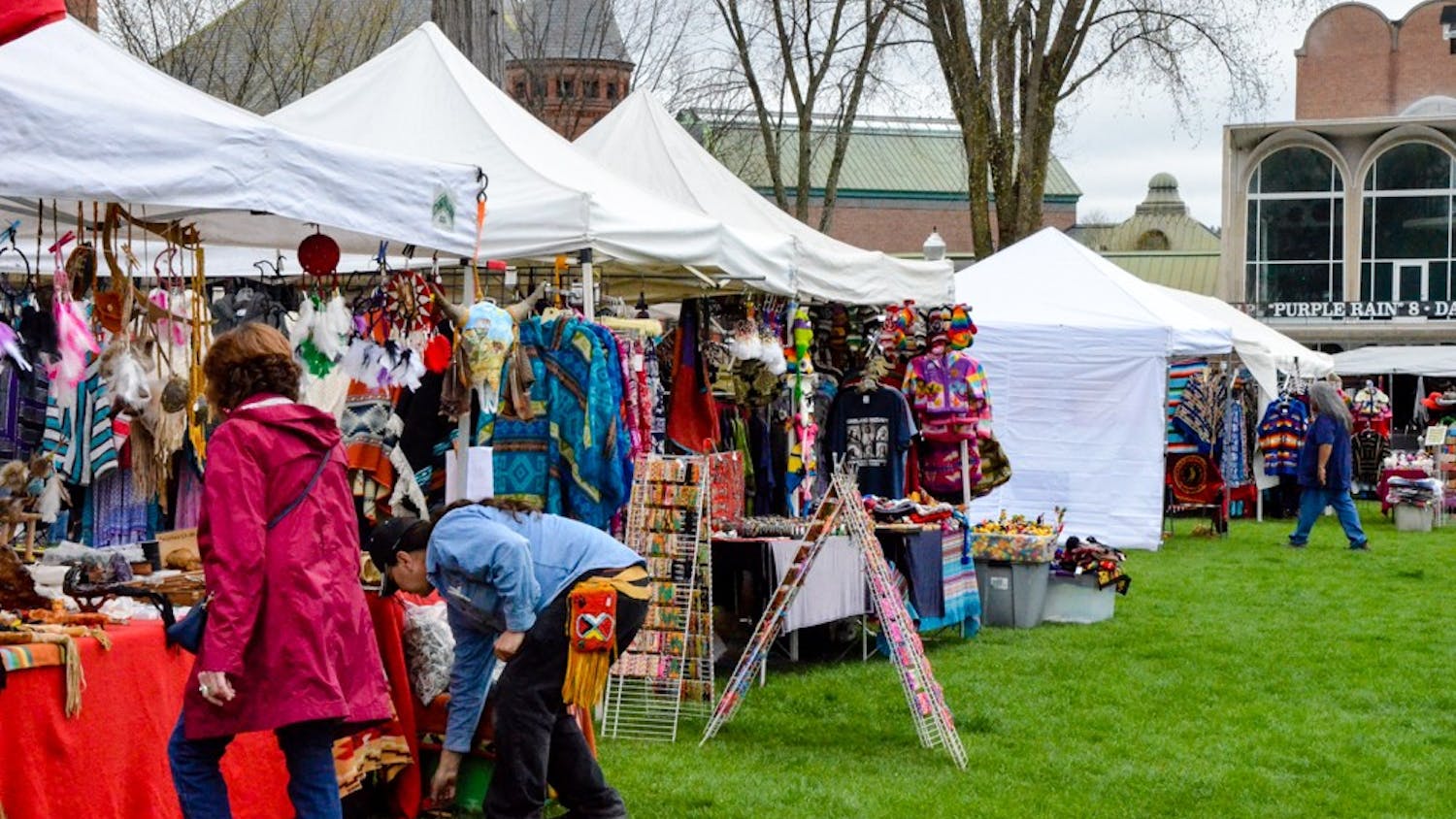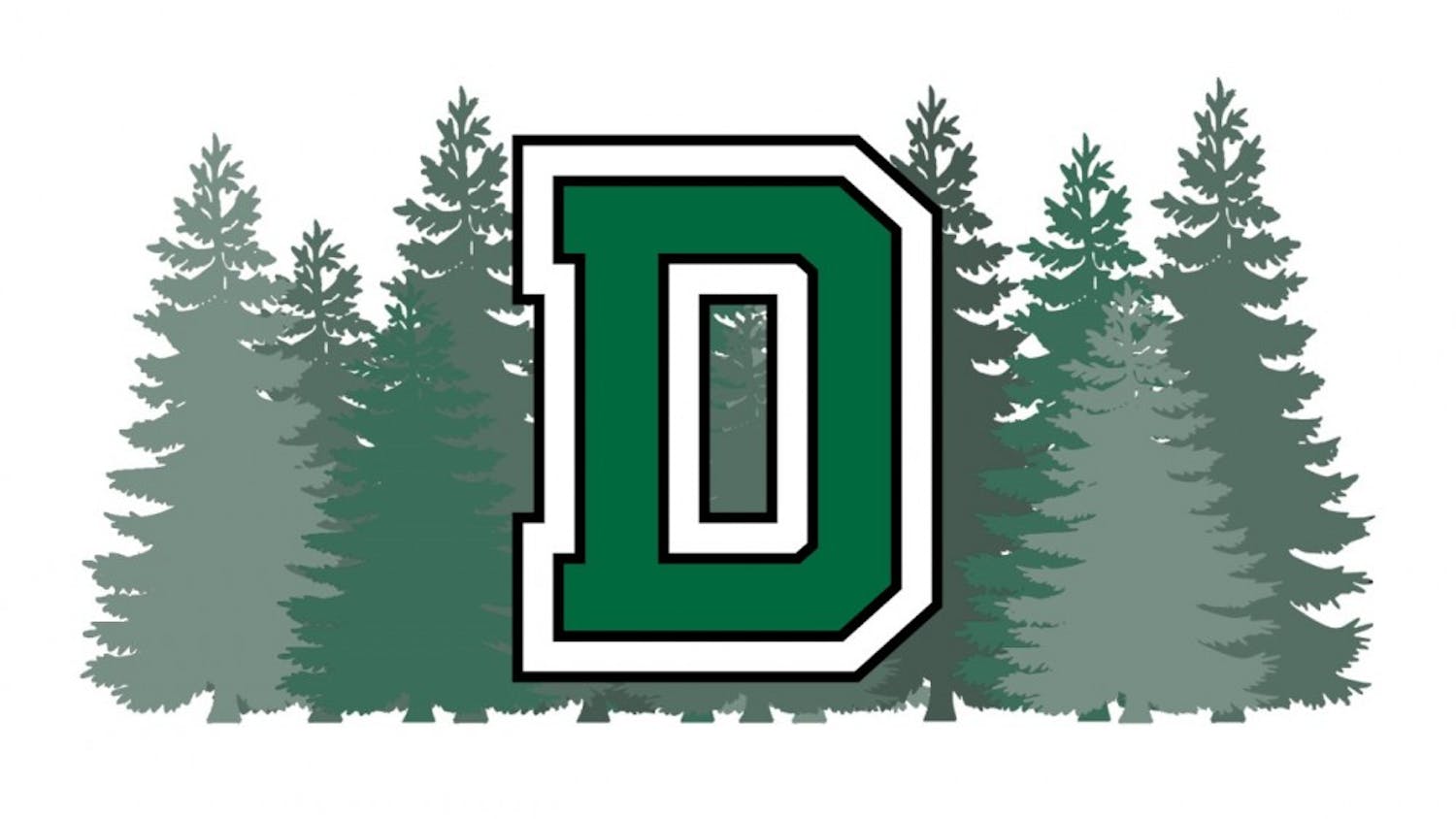On Oct. 14, Native American students launched a month-long celebration of Indigenous Peoples’ Month, which began with a demonstration on the Green recognizing Indigenous Peoples’ Day — a holiday celebrated on the same day as the federal holiday Columbus Day.
According to Native Americans at Dartmouth co-president Onaleece Colegrove ’20, the “silent protest” on the Green sought to “take back [Indigenous Peoples’ Day] and recognize indigenous people instead of glorifying Columbus.”
NAD co-president and Indigenous Peoples’ Month programming committee co-chair Elsa Armstrong ’20 shared similar sentiments, explaining that NAD often recognizes the beginning of Indigenous Peoples’ Month with a protest on the Green during Indigenous Peoples’ Day. This year, however, NAD chose to focus their demonstration on a specific issue within the Native American community — Missing and Murdered Indigenous Women, Girls and Two-Spirits, which centers on the disproportionate number of indigenous women, girls and two-spirits who are either missing or killed.
“This is one of the first years since I’ve been here that we’ve put more of a focused topic to the demonstration, because MMIWG2S is such a pressing issue amongst all indigenous communities right now,” said Indigenous Peoples’ Month programming committee co-chair Selena Neptune-Bear ’20. “It’s really important that we’re in on that conversation and make sure that people at Dartmouth are aware, because the Dartmouth community is very much affected by this epidemic as well.”
Neptune-Bear noted the example of Nicole Redhorse ’95 — who was sexually assaulted and killed in 2007 in Durango, CO — of Dartmouth’s connection to this issue. The three men responsible for her death have been sentenced to 48-year maximum sentences for sexual and negligent manslaughter.
“It’s really important to make people at Dartmouth aware that this isn’t just some distant thing, but that it’s a part of the Dartmouth community as well,” Neptune-Bear said.
Armstrong, Colegrove and Neptune-Bear all emphasized the importance of Indigenous Peoples’ Month as an opportunity to increase visibility of Native American and indigenous people at Dartmouth and beyond. Colegrove also said that this year marks the first time NAD will expand the celebration to an entire month.
“We have a lot of different things we wanted to do and we have a lot of different communities within communities and we wanted to be able to represent those communities in different ways,” Colegrove said. “And so we needed a longer time than just a day or a just week or even just a month. In the United States, there are 573 federally recognized tribes, and there are more than that but not all of them are recognized, and that’s just the U.S. alone.”
As the scope and duration of Indigenous Peoples’ Month celebrations have grown, so too has the amount of planning put into it. According to Armstrong, this year was the first year that NAD had an official committee for Indigenous Peoples’ Month, that they applied for Special Programs and Event Committee funding, and that the majority of the events have been open to campus.
“It’s never been done at this scale,” Armstrong said. “There’s always been celebrations at least for Indigenous Peoples’ Day, and at least a few more sprinkled throughout, but this is the first time it’s been this large and central to campus.”
Neptune-Bear added that the funding from SPEC also has the benefit of making NAD more visible to campus.
“We want more allies, we want to bring in people that might not be familiar with indigenous communities,” Neptune-Bear said.
Along with the theme of visibility, Neptune-Bear said she hopes that this month’s events can create contemporary perceptions of Native American people and challenge some more antiquated ones that might be associated with Dartmouth’s former mascot.
Colegrove echoed this statement, sharing a story from an Indigenous Peoples’ Day when she visited Dartmouth as a prospective student.
“My prospective year, during this time of year, the [Dartmouth] Review — or allegedly the Review — posted pictures of the old Dartmouth mascot around campus, which is just another racist depiction of a caricature of Native people,” Colegrove said. “And it’s just really disrespectful and really ignorant, and I feel like that’s something that brought to the larger Dartmouth community’s attention of why things like Indigenous Peoples’ Day are important and should be recognized. And so people can get educated.”
Neptune-Bear said that she hopes the NAD Fashion and Art Showcase, as well as billboards in Collis Center focusing on notable indigenous people who have contributed to society, can help bring about an understanding of contemporary contributions to society by indigenous people.
“The Fashion and Art Showcase highlights a contemporary version of how we perceive Native people today,” Neptune-Bear said. “We’re showing what current Native people are doing in art and fashion and just showing how we’re bringing our tribal designs into a more contemporary, modern field.”
Armstrong echoed Neptune-Bear’s statement, saying that NAD hopes to “focus not only on bringing attention to the resilience in the contemporary community, but also highlighting and celebrating indigenous voices and faces on campus.”
Armstrong shared that she hopes community members will consider attending all of the Indigenous Peoples’ Month events, but in particular the frybread competition on Oct. 26.
All three NAD leaders stressed that they hope Dartmouth as an institution and the Dartmouth community will continue to expand support for indigenous people and programs.



